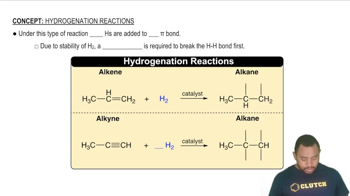(c) Why do substances with high surface tension also tend to have high viscosities?
The boiling points, surface tensions, and viscosities of water and several alcohols are listed in the following table:
b. How do you explain the fact that propanol and ethylene glycol have similar molecular weights (60 vs. 62 amu), yet the viscosity of ethylene glycol is more than 10 times larger than propanol?
 Verified step by step guidance
Verified step by step guidance
Verified video answer for a similar problem:
Key Concepts
Molecular Weight and Viscosity

Intermolecular Forces

Hydrogen Bonding

Based on their composition and structure, list CH2Cl2, CH3CH2CH3, and CH3CH2OH in order of (a) increasing intermolecular forces (c) increasing surface tension
Liquids can interact with flat surfaces just as they can with capillary tubes; the cohesive forces within the liquid can be stronger or weaker than the adhesive forces between liquid and surface:
(b) Which of these diagrams, i or ii, rep- resents what happens when water is on a nonpolar surface?
Name the phase transition in each of the following situations and indicate whether it is exothermic or endothermic: (c) Rubbing alcohol in an open container slowly disappears.
Name the phase transition in each of the following situations and indicate whether it is exothermic or endothermic: (d) Molten lava from a volcano turns into solid rock.
